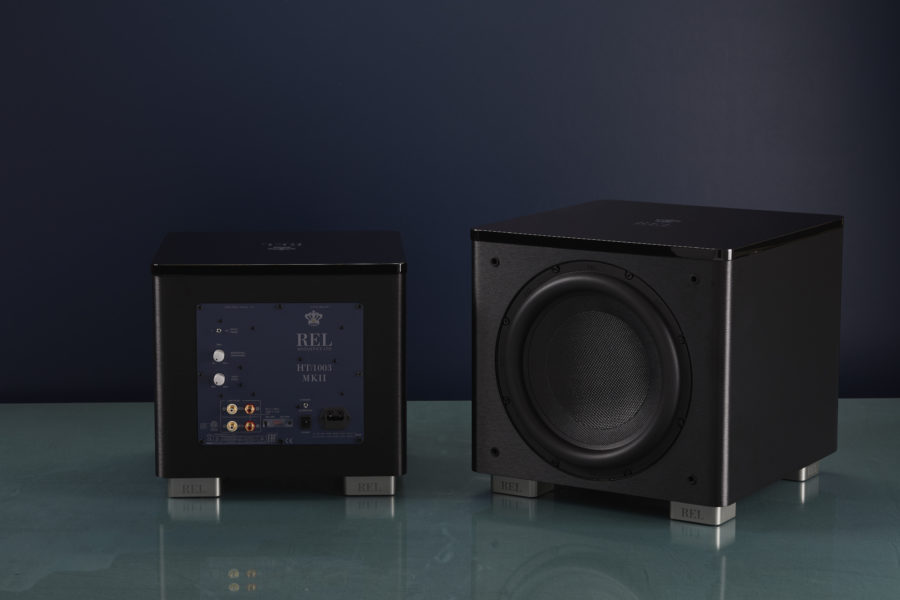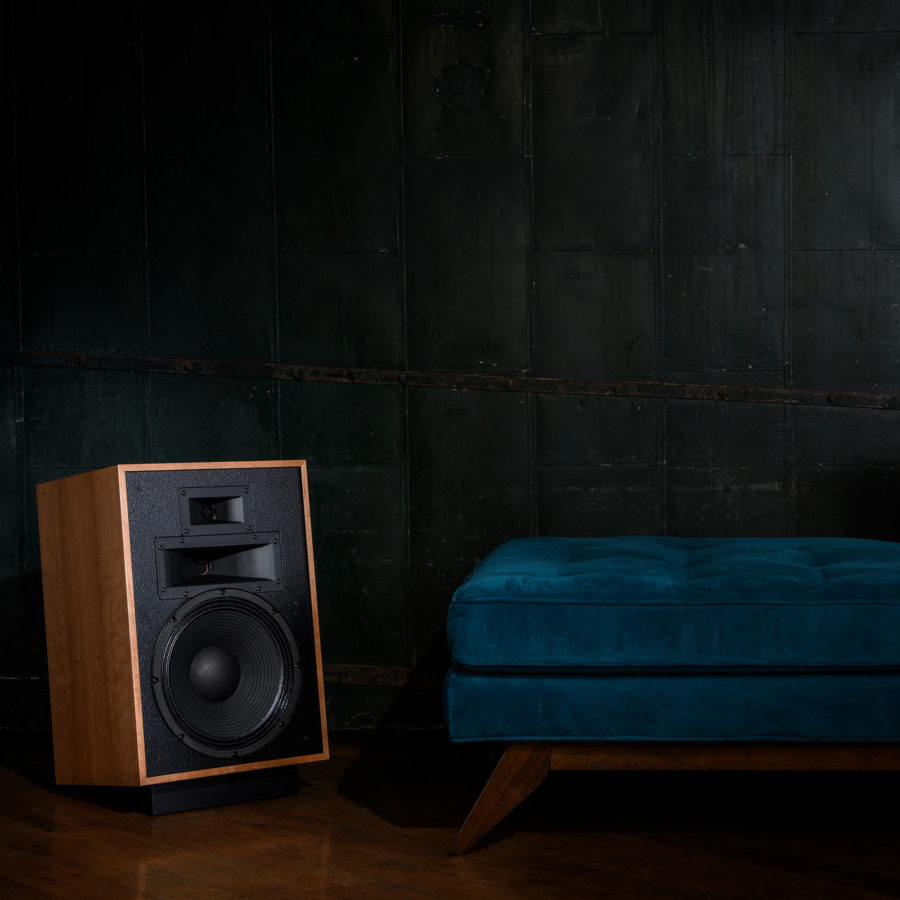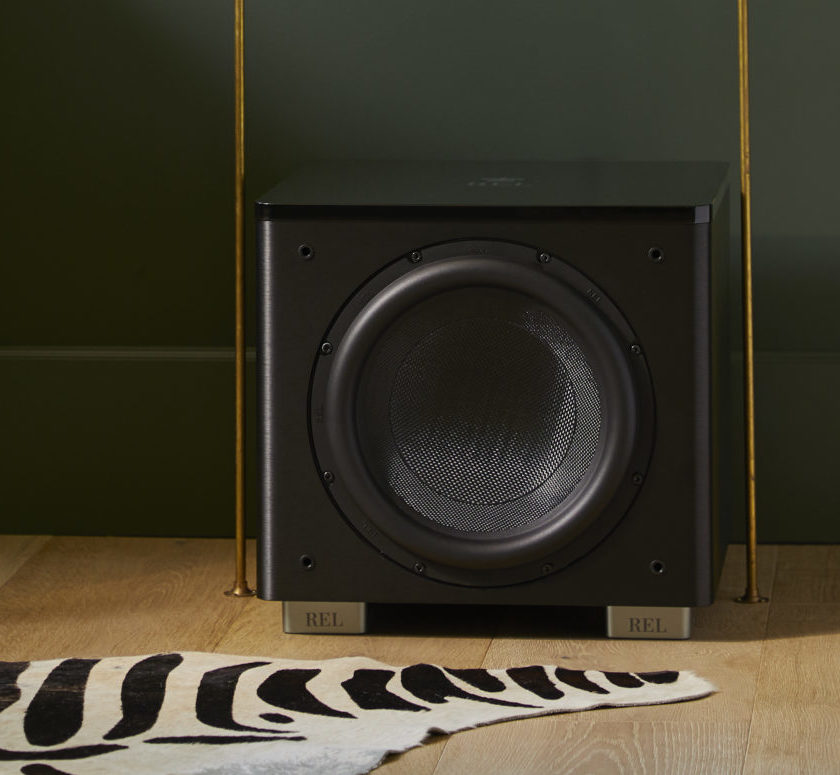Blog
To HT or Not To, That is the Question
When to Reach for our Latest HT models Instead of Serie T/x

We’ve just brought out our second generation of our Serie HT and, no surprise, they’re incredible in theatre applications. Natch. But it turns out we also baked in all kinds of yummy goodness when it comes to making music. In this article, we’re going to decode for you when you should reach for Serie HT instead of our best-selling Serie T/x.
There are two conditions under which you’ll definitely want to consider the new HT for music pairing:
- When using it with an active loudspeaker such as KEF’s LS50 Active.
- When using it with very efficient speakers like Klipsch’s Heritage range.
What? Isn’t that heresy? After all, it was REL who taught us that connecting via High-Level Inputs sounds better. This is because you get your power amplifier’s sound built forward into the output and suddenly your subwoofer blends perfectly. Easy now, pump the brakes, we’ll explain…
The simplest way to figure out whether a Serie HT (Home Theatre. This range does not supply our famous High-Level Input) is the better choice is very simple. Look up your speaker manufacturer’s spec for efficiency; this will be expressed as dB of output at 1-watt input. If your speakers are more than 95 dB at 1-watt efficient, you may want to look into the Serie HT, instead of an equally great-and-amazing-sounding Serie T/x.
Why?
Let’s step back and review why everyone loves our High-Level Input. Long ago, Richard Lord reasoned that using your power amp’s speaker output terminals to drive the front end of a subwoofer should allow it to sound exactly the same as your speakers because it was being fed exactly the same signal. And that’s absolutely true.
Right up until the efficiency of a speaker becomes so great that a high-level input isn’t being fed a strong enough signal to the input of your REL. See, when a speaker becomes 95 or more dB efficient, it produces a very loud sound with just a single watt of input. This puts it into a special category. It’s a category that comprises less than 5% of worldwide loudspeaker sales, but that’s not a bad thing. These are typically, but not always, horn loudspeakers. Horn speakers use plastic or other formable materials (wood, metal, phenolic, etc.,) that can assume the shape of a “horn”; you see these at live rock concerts all the time.
A horn works because it makes what is usually a jarringly “high impedance” transfer. A tiny tweeter, for example, trying to compete with open air pressure has to work very, very hard to make sound. Whereas a horn tweeter gently transitions from sound at the surface of the tweeter to eventual room air pressure. It turns out that doing so is so much easier, and less jarring which means that horn speakers are much more efficient at creating sound pressure.

Let’s look at a Klipsch model Heresy IV. At $3300/pr., they are a very well-built heavy speaker of a size that used to be referred to as a “large bookshelf” speaker. Modern ones come attached to angled wood bases that permit them to sit on the floor and direct the sound up toward the listener. At 99 dB/1-watt of efficiency, these are 10-12 dB more efficient than a typical speaker. These play loud with just 1-watt supplied by your amplifier. And a single watt driving a High-Level Input on a subwoofer won’t begin to drive a sub loud enough to keep up. So, what to do?
Enter the realm of REL’s new HT models. These ultra-dynamic, ultra-powerful subs use conventional low-level RCA inputs since their original design brief calls for them to deliver truly devastating .1/LFE signals. The ones that make the special effects in movies come alive. By doing so, you are no longer dependent on the very low output signal from your amp. This leaves you free to turn up the subwoofer’s volume loud enough to perfectly blend with the Klipsch Heresies or any other super-efficient speakers. This includes other models in their line or the Zu Omen (check out the newest versions of their Dirty Weekend model). And because it’s a REL, you get the same incredible filter qualities that our more expensive models offer, as well as fast, responsive drivers and great cabinets. Until you hear the match between Klipsch and REL, you haven’t heard what high efficiency and huge dynamics can do for the soul.

Here’s a tip:
Pair the Klipsch Heresies with a pair of our new HT/1205 MKII for a perfect blend that doesn’t break the bank. In a smaller room, feel free to use a pair (or start with a single, it’s fine) of our new HT/1003MKII. Just be sure to buy Y-adaptors (1 male to 2 female) if you plan to run stereo pairs of HTs with efficient speakers.
And for Active Speakers like those wonderful KEF LS-50 Actives or their newer LSX or LS-60s that require the use of their wireless transmitter the only option is the subwoofer out on the rear of one of their speakers. KEF wireless speakers have a sophisticated menu for optimizing subwoofer out with their speakers. We’ll make a video soon about best practices and also about which of the new HTs partner best with these and other active speakers.
If you own, or plan to own, a pair of efficient speakers like Klipsch or are considering active powered speakers (like the KEF LS-50 Actives, LSX, or LS-60 Actives), use our new HT range. They’ll blend perfectly, are incredibly quick and responsive like all RELs, and match the connector types used for active speaker wireless transmitters. And, having partnered a new big HT/1510 pair with Klipsch Cornwalls fed by a Prima Luna EVO 300 integrated amp, I can assure you that the sound is huge, liquid, and entirely musical with graceful, delicate nuance as well as the huge dynamics one expects. Enormously satisfying.











